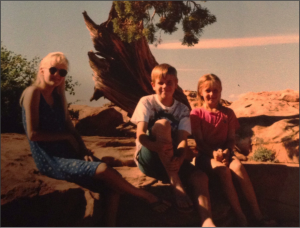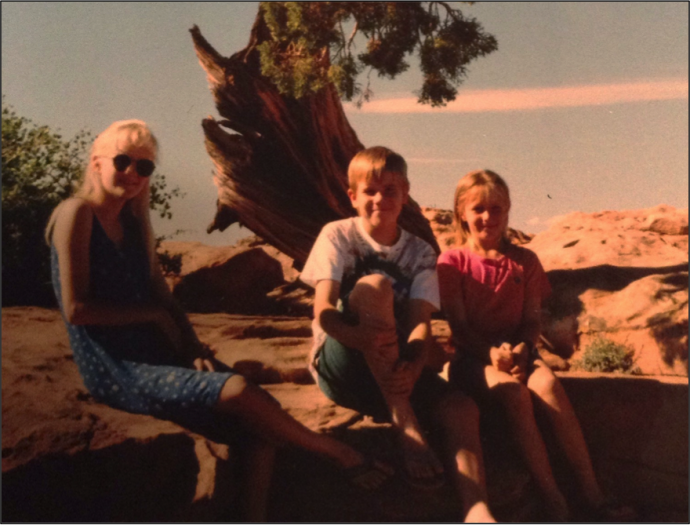
I still remember the day my brother fell to the ground while climbing a tree at his friend’s house. The bustling ED, the X-ray waiting area, and later, the cast—everything was new through my eight-year-old eyes.
Also new was the discussion between my mom and the orthopedic surgeon:
“Your son needs surgery to repair his fractured humerus. What insurance do you have?”
“We don’t have insurance,” my mom said.
I didn’t know what insurance was, but I did recognize the worry in my mom’s eyes.
“Hmm . . . Maybe we can treat him without surgery.”
My brother went on to have a great outcome with conservative management, and my mom was incredibly grateful to have avoided the risks and cost of surgery. At the time, she was a college-educated, stay-at-home mom who had suddenly found herself the sole breadwinner of the family. It was a time of transition for us, and the financial consequences of surgery could have been disastrous.
We’ve all seen the bar graphs that show the rising cost of health care in the US. We know that the amount we spend is unsustainable; we know that big changes are coming to the way we will practice medicine throughout our careers. But how often do we remember that the decisions we help make will have direct—and sometimes substantial—financial consequences for the human being sitting in front of us?
I’m not just talking about the patients that we see in settings that provide for the underserved; I’m talking about patients that we see in all settings and situations. Cost-consciousness can be a powerful way to provide compassionate care.
In a study of bankruptcy filings in the US, more than half were due to medical reasons; most were among well-educated, middle-class, medically insured homeowners [1]. These could be many of our family members and neighbors. They even could have been my family.
The cost of healthcare may be the biggest issue faced by our generation of physicians. We don’t need to wait until we’re residents and attendings to stand up and show leadership on this issue; we can start now as medical students. Here are eight ideas to get you thinking:
- Read articles on high-value care. Atul Gawande’s New Yorker article “Overkill” and the JAMA series Less is More are great ways to get you started [2,3].
- Ask questions about cost during your next lecture or on rounds.
- Be aware of the ways that the hidden curriculum might bias us toward low-value care. For example:
– In USMLE Step 2 CS, students are encouraged to work up every symptom and include every test that comes to mind rather than the tests that will have the highest value in answering your clinical question.
– Morning Report and other resident lectures often focus on rare diagnoses rather than the most likely diagnoses for the patient’s chief complaint. - Each time you start a new rotation, visit ChoosingWisely.org, and review the top five most relevant recommendations for your rotation. Better yet: print them out and carry them in your pocket!
- Ask your residents and attending for feedback not only about the medical value of your plan but also about the cost effectiveness of your plan.
- Be an extra set of eyes keeping track of IV fluids, Foley catheters, and empiric antibiotics. There may be times when these are continued longer than necessary simply because your clinical team is busy with many other things.
- Practice obtaining code status and learn about end-of-life care.
- Look for opportunities to provide counseling and education to your patients. According to Atul Gawande, “unnecessary care often crowds out necessary care.” Many times, the most important component of necessary care is patient counseling and education.
You never know . . . the mother of a boy with a broken arm—and her future physician-daughter—may sincerely thank you someday.
- Himmelstein DU, Thorne D, Warren E, Woolhandler S. Medical bankruptcy in the United States, 2007: results of a national study. Am J Med 2009;122(8):741–6
- Gawande A. Overkill. The New Yorker. May 22, 2015. http://www.newyorker.com/magazine/2015/05/11/overkill-atul-gawande
- The JAMA Network, Collections: Less Is More. http://jamanetwork.com/collection.aspx?categoryid=6017
- Moriates C, Arora V, Shah N. eds. Understanding Value-Based Healthcare. New York, NY: McGraw-Hill; 2015
Mandy Boltz is a 4th year student in the MD/MPH dual degree program at the University of Arizona College of Medicine - Phoenix. She grew up in beautiful Salt Lake City and served in the Peace Corps in Uganda before medical school. She loves family medicine, women's health, learning Spanish, playing the piano, visiting hot springs, fixing her car, and most importantly, spending time with her husband, five nieces and nephews, and incredible family and friends.

